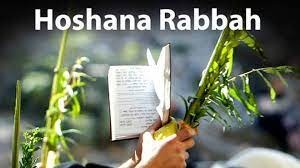 We begin this SPECIAL EDITION HOISHANA RABBAH post with a huge mazel tov to our good friends Esty and Aaron Felder upon the upcoming bar mitzvah -this Shabbis, Parshas Bereishis- of their amazing son Simi. Simi is the real deal! He’s adorable, smart, and exceedingly witty. Mazel tov to you Simi; we look forward to your laining and speech. Mazel tov to Simi’s siblings, uncles, aunts and many cousins. A very special mazel tov shout out to Simi’s grandparents, Hon. Shimon and Mrs. Miriam Felder, and to Rabbi Yussie and Mrs. Joy Lieber. We look forward to participating in the great simcha.
We begin this SPECIAL EDITION HOISHANA RABBAH post with a huge mazel tov to our good friends Esty and Aaron Felder upon the upcoming bar mitzvah -this Shabbis, Parshas Bereishis- of their amazing son Simi. Simi is the real deal! He’s adorable, smart, and exceedingly witty. Mazel tov to you Simi; we look forward to your laining and speech. Mazel tov to Simi’s siblings, uncles, aunts and many cousins. A very special mazel tov shout out to Simi’s grandparents, Hon. Shimon and Mrs. Miriam Felder, and to Rabbi Yussie and Mrs. Joy Lieber. We look forward to participating in the great simcha.
———————————————————————————————————————
The Last Bang Theory & Why Sukkis is Better Than Pesach
Welcome to Hoishana Rabba, the day that makes Sukkis an overall better Yom Tov than Pesach. Azoy? It’s taka emes that Pesach might have more meaning; after all, it’s the holiday when we celebrate redemption from slavery. What could be better? Ober, that being said, many would argue they enjoy Sukkis more. They may also argue that Sukkis is more festive for several reasons. Ershtens, we are commanded to be happy over Sukkis. In fact, our rabbis tell us that since the word “somayach” (happiness) appears three times in the heylige Toirah in reference to Sukkis, we are to be “only happy” over the entire seven-day holiday. Some say that if we are indeed happy over Sukkis, we are destined to be happy all year. Is that emes? Ver veyst? Shoin, one might assume -and efsher correctly so- that once so commanded, whatever it takes to be happy, is sanctioned and kosher.
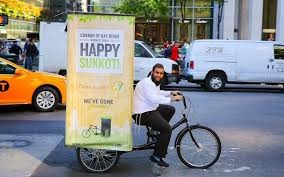
But wait, there’s more: it’s taka emes that both Pesach and Sukkis have four days of Chol Hamoed (intermediary days) days when we can use our phones, watch TV, drive, enjoy an amusement park, and or, whatever. Ober, it’s les man dipoilg (few if anyone would argue) that Sukkis is better because it comes with a bonus day, the day we call Hoishana Rabba. And what a day it is. On this day -tomorrow- you’ll get to hold your lulav and esrog while circling the bima not once but seven times. It’s the day when we rationalize the cost of the lulav and esrog which make an appearance for but 5 minutes daily over the other days of Sukkis, but on Hoishana Rabba, the lulav and esrog are front and center. It’s prime time and It’s time to show off your investment.
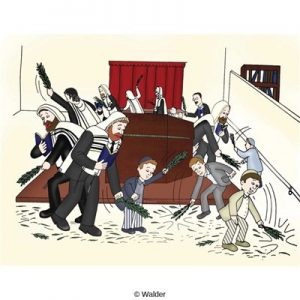
But wait: there’s even more! In a custom that was zicher made up by some very frustrated masochist, one with very serious issues, we get to beat the living daylights out of our hoishanis (willows) to be followed by an even stranger minhag: in a custom the Ois never chapped, many will throw the beat up and now spent hoishanis on top of the Oroin Koidesh (the Ark containing the heylige Toirah scrolls). Is this the way to ask the RBSO for forgiveness and a second chance? Is this respectful? Moreover, the shul janitor comes along a short time later and throws them all in the garbage. Is this kovod haToirah (proper respect)? Imagine the reward the eishes chayil would give you if you came home with beat up hoishanis and threw them on top of the bed, dresser or anywhere else in the house. What’s taka pshat here and why do we do this? ver veyst?
Though the heylige Ois, altz kint (as a younger child) gave these unusual customs short shrift, more recently, he began to wonder what all this symbolism is all about? How does walking around in circles and then banging a few leaves help us and what’s taka pshat here? Nu, lommer lernin (let’s learn).
Though not mentioned in the heylige Toirah by name, it appears that many generations back, some rabbis decided that we needed one last day and one last opportunity to ask the RBSO for forgiveness before sentences decreed on Rosh Hashono and confirmed on Yom Kippur, are executed. In other words: though we were taught that the Niela prayer was it, that the gates to repentance were closed once Niela was over, our good rabbis seemingly got us a final extension. We have one last chance to have the RBSO tear up the decree. And after klapping (beating and banging) your chests kimat (nearly) 500 times on Yom Kippur, on this day, you get to bang one more time. Seemingly, one good bang session beats 500, if you chap. What’s taka pshat, and since when can banging an innocent willow be considered part of the tshuva process? And maybe a significant part at that? Isn’t it the illegal bang, if you chapped, that gets many into trouble? Can banging an innocent Hoishana (willow) save your life? Lommer lernin epes (learn something) about this special and mysterious day we call Hoishana Rabba.
Ershtens, givaldige news -mistama better than most of you deserve- and an excellent answer as to why we refer to Sukkis as – z’man simchosaynu (time of happiness). Listen to this chiddish (breakthrough idea): Though the heylige Ois told you just last week that previous sins, those on last year’s books, could be forgiven up until the first night of Sukkis, seemingly you will get one more opportunity to wipe the slate clean. Welcome to Hoishana Rabba, a holiday not found in the heylige Toirah but one that has its own magical powers.
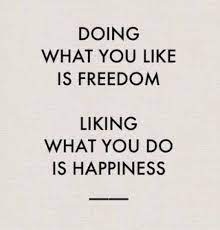
Says the heylige Zoihar (VaYechi 120a; Terumah 142a) azoy: Hoishana Rabbah, is considered a day of judgment. It is? What happened to Rosh Hashono? Have we been marking the Day of Judgment on the wrong days? Is there more than one? And will the real Day of Judgment please stand up. Ober as the Ois has told you many times in the past: we don’t mess with the Zohan and certainly not with the heylige Zoihar. Said he azoy: Although one is taka judged on Rosh Hashona, the jury (so to speak) is epes still in deliberations or efsher still sequestered, and the verdict is not delivered until Hoishana Rabba, the last day of Sukkis. In plain English what this seems to tell us is that until its delivery, one still has time to do tshuva (repent), and efsher the RBSO will find epes a way to forgive you and let you start all over again. Nu, could there be better news for bums like many of you that keep talking about changing your ways but don’t? Seemingly not! Raboyseyee, now is the time.
Efsher you’re wondering how Hoishana Rabba get mixed up with days of judgment? Isn’t the gantze (entire) Yom tov of Sukkis including Hoisahna Rabba which is the last day of the Yom Tov but one of the Sholoish Regolim (three pilgrimage festivals)? Zicher, Sukkis is not part of the High Holy Days when tshuva is in season. And shtelt- zich- de-shaylo (the question arises) azoy: who empowered Hoishana Rabba to be a tshuva holiday? Ober let’s recall what we learned just recently: the proximity of this Yom Tov to the Days of Judgment creates the feeling that all the holidays are part of a whole; shoin, a connection is made. In other words, or in plain English, according to this view, since Sukkis comes around in the same month as do Rosh Hashono and Yom Kippur -mamish four days after Yom Kippur- we include Sukkis in the Tshuva season. And that’s pshat hanging around. Still don’t get it? Let’s try this? If you hang around near, or with a multi-millionaire, chances are the epes something might come your way. Ober if you hang around with schnorrers, chances are not as good. Chap? Hanging around has its own rewards and in this case, Hoishana Rabba, which is seemingly part of Sukkis, comes with its own rewards program and gets connected to the forgiveness season. How? What needs to be done to gain an acquittal on this day? Nu, lommer lernin.
On Hoishana Rabba we dress like it’s a weekday, daven like it’s Yom Tov, and hope to be forgiven like it’s Yom Kippur. We also say goodbye to our lulavim and esrogim and wonder aloud why we paid between $50 and $150 for a lemon with acne. Ober vus iz iz (what is it)? First the facts:
1-Hoishana Rabbah is the seventh and last day of Sukkois. Is that emes? Not according to all, and soon, space permitting, we’ll check in on this machloikes (argument).
2- There is no mention of this day in the heylige Toirah.
3- Hoishana Rabbah is known as the day of the final sealing of judgment which began on Rosh Hashono: Hoishana Rabbah is somewhat similar to Yom Kippur except that we get to eat, drink, shower, wear leather and bang away, if you chap.
- Hoishana Rabbah is one of the most interesting and lofty days of the year. On one hand it is a regular weekday, part of chol hamoed (intermediate days) of Sukkis. On the other hand, it’s a Holiday unto itself. Which is it ver veyst, and likely this will not be resolved until Eliyohu makes an appearance and all taka believe it’s really him. When will that be? Ver veyst?
5- It has its source in the traditions of the prophets.
Where did it come from, who invented it and decided to add it to our calendar? Says the heylige Mishnah (Sukkah 4:5): the custom, way back in the days of the Beis Hamikdash (Temple), was to circle the Mizbayach with large willow branches, one time on each day of Sukkois and seven times on the seventh day. So too we circle the Bimah reciting Hoishanis once daily during each day of Sukkos and seven Hoishanos on the Seventh day. It’s mashma (appears then) that Hoishana Rabba is aptly named because more hoishanis (Hosannas) are recited on this day than all the previous days of the holiday. Shoin. On this day, instead of one clumsy attempt at circling the bimah, while holding our lulavim and esrogim in one hand and juggling awkwardly the siddur in the other, we do this seven times.
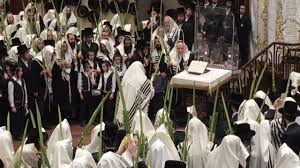
The highlight of the morning is the klapping (banging) of the Hoishanis, a custom that even the veyber and kinderlach (women and children) perform; seemingly a good hoishana bang is enjoyed by all, albeit once a year, if you chap.
Exactly how this custom of Hoishana banging, of beating silly and into submission the innocent hoishanis for which we just paid between $5 and 10, seemingly atones for our sins, ver veyst. Nu, it’s seemingly better than killing innocent chickens. And as one would expect to hear, there are at least four different opinions on when one should bang the hoishana; timing, as always in these matters, seems to be critical, if you chap.
Some bang immediately before the final Kaddish, some in the middle of Kaddish before Tiskabel, and some after the end of Kaddish, which was the Minhag of the Arizal and is quoted by the Baer Haitiv. Those who want special consideration, begin the banging the night before, if you chap. Oisvorfs klapp away whenever the opportunity presents.
How much banging is in order? Nu, again this depends on who you ask but here the most popular: Some say that one is to bang two or three times, on the floor or on vessels. Not bad for $5, if you chap. Says the Arizal: we are to bang specifically on the floor five times. This signifies that we are ‘burying’ the judgment. And, says the Ben Ish Chai: the banging surface must be specifically unpaved, virgin earth. Seemingly virgin earth is better, if you chap. Not all agree, and there appears to be some advantage to banging on vessels for they cause the leaves to fall off, which symbolizes shredding of the disastrous decrees. Say the Pri Megadim and the Mishna Berura: banging should follow the Arizal’s recommendation: one should bang to the floor and to continue banging on vessels until some of the leaves fall off. Too much banging is avada not recommended and, says the Chaya Odom: continuous banging until all the leaves fall off is childish gleeful play.
Ober why do vent our frustrations on the innocent willows? Were they involved with our sins during the past year? Says the heylige Medrish azoy: seemingly the leaves of the Arovos (hoishanis) symbolize the lips. Specifically, they represent the lips of the Soton (Satan), not a good guy, and we bang them on the ground in order to silence the Soton’s lips from prosecuting us. Nu, if only it were so easy. Silencing the Soton on this day when final judgments are sealed, is a good thing.
Ober a closer reading of this Zoihar tells us that the day on which the verdict is delivered is actually Shemini Atzeres, the final day of the entire Chag (over in Israel), and not Hoishanah Rabbah (the day before). How could the verdict be delivered on both Hoisahana Rabba and on Shmini Atzeres? Taka an excellent kasha on the Zoihar ober avada there is an answer and the Chesed le-Avraham explains away the contradiction as follows– the last chance to change one’s judgment is actually Hoishanah Rabbah; whoever has not yet repented by then has his verdict handed down on Shemini Atzeres: Gishamak mamish.
The words Hoisha-Na are literally a plea for salvation and lommer huffin (let’s hope) that the Soton’s lips are taka sealed tight. Loose lips sink ships.
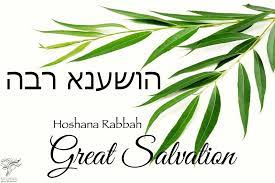
A gittin Yom Tov-
Yitz Grossman
The Heylige Ois
